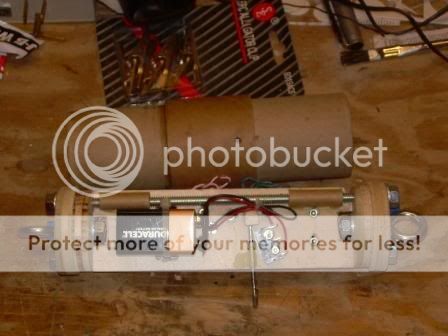Buckaroo
Well-Known Member
- Joined
- Mar 2, 2009
- Messages
- 392
- Reaction score
- 8
So I'm finally going to quit talking (not really) and build a rocket for a Level 1 flight.
I am very interested in folks opinions regarding the basic concept I've got outlined below (honest).
x1.77 Upscale of a Thrustline Duster
Semroc #225 airframe (2x30") and balsa nose cone (Upscale of classic BNC55-AC)
Handmade airframe coupler (Semroc doesnt make one for this tubing yet?)
29mm motor mount (14" long) 3x plywood centering rings
1/8" plywood fins
TTW mounting of main (aft) fins, surface mounting of fwd fins
Leaning towards a Slimline motor retainer
1/8" Tubular Kevlar shock cord (~15 feet) anchored to bulkhead (2 sandwitched centering rings) just fwd of the tube coupler
30" or 36" chute based on finished weight and kevlar chute protector
No electronics, straight up delay grain and out of the bag ejection charge
Lugs or rail guides - undecided
So let's hear it... thoughts, advice, opinions... Thanks

I am very interested in folks opinions regarding the basic concept I've got outlined below (honest).
x1.77 Upscale of a Thrustline Duster
Semroc #225 airframe (2x30") and balsa nose cone (Upscale of classic BNC55-AC)
Handmade airframe coupler (Semroc doesnt make one for this tubing yet?)
29mm motor mount (14" long) 3x plywood centering rings
1/8" plywood fins
TTW mounting of main (aft) fins, surface mounting of fwd fins
Leaning towards a Slimline motor retainer
1/8" Tubular Kevlar shock cord (~15 feet) anchored to bulkhead (2 sandwitched centering rings) just fwd of the tube coupler
30" or 36" chute based on finished weight and kevlar chute protector
No electronics, straight up delay grain and out of the bag ejection charge
Lugs or rail guides - undecided
So let's hear it... thoughts, advice, opinions... Thanks




















